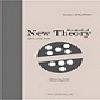On Distances and Similarity Measures between Two Interval Neutrosophic Sets
An Interval Neutrosophic
set (INS) is an instance of a Neutrosophic set and also an emerging tool for
uncertain data processing in real scientific and engineering applications. In
this paper, several distance and similarity measures between two Interval
Neutrosophic sets have been discussed. Distances and similarities are very
useful techniques to determine interacting segments in a data set. Here we have
also shown an application of our similarity measures in solving a multicriteria
decision making method based on INS’s. Finally, we take an illustrative example
from [14] to apply the proposed decision making method. We use the distance as
well as the similarity measures between each alternative and ideal alternative
to form a ranking order and also to find the best alternative. We compare the
obtained results with the existing result in [14] and also reveal the best
distance and similarity measure to find the best alternative and also point out
the best alternative.
___
- [1] K. Atanassov, Intuitionistic Fuzzy Sets, Fuzzy Sets and Systems, 20(1986) 87-96.
- [2] K. Atanassov and G.Gargov, Interval valued intuitionistic fuzzy sets, Fuzzy Sets and Systems 31 (1989), 343–349.
- [3] S. Broumi and F. Smarandache, Several Similarity Measures of Neutrosophic Sets, Neutrosophic Sets and Systems, Vol. 1, 2013, 54- 61.
- [4] S. Broumi, F. Smarandache, New distance and similarity measures of Interval Neutrosophic Sets, IEEE Conference publication (2014).
- [5] P. Majumdar, S.K. Samanta, On Similarity and Entropy of Neutrosophic Sets, Journal of Intelligent and Fuzzy systems, 2014, vol 26, no. 3,2014, 1245-1252
- [6] P. Majumdar, Neutrosophic Sets and its applications to decision making, Computational Intelligence for Big Data Analysis: Frontier Advances & Applications, Springer- Verlag/Heidelberg, D.P. Acharjee at. al. editors, 2015, 97-115
- [7] C. P. Pappis, N. I. Karacapilidis, A comparative assessment of measures of similarity of fuzzy values. Fuzzy Sets and Systems, 56:171174, 1993.
- [8] G. A. Papakostas, A. G. Hatzimichailidis, V.G. Kaburlasos, Distance and Similarity measures between Intuitionistic Fuzzy sets : A comparative analysis from a pattern recognition point of view, Pattern Recognition Letters, vol. 34, issue 14,2013,1609-1622.
- [9] F. Smarandache, A Unifying Field in Logics. Neutrosophy: Neutrosophic Probability, Set and Logic, American Research Press, Rehoboth (1999).
- [10] F. Smarandache,, Neutrosophic set: A generalization of the intuitionistic fuzzy set, International Journal of Pure and Applied Mathematics 24 (2005), 287–297.
- [11] I. Turksen, Interval valued fuzzy sets based on normal forms, Fuzzy Sets and Systems 20 (1986), 191–210.
- [12] H. Wang., F. Smarandache, Y.Q. Zhang,, and R. Sunderraman,., Interval neutrosophic sets and logic: Theory and applications in computing, Hexis, Phoenix, AZ, 2005.
- [13] H. Wang, et al., Single valued neutrosophic sets, Proc. Of 10th Int. conf. on Fuzzy Theory and Technology, Salt Lake City, Utah, July 21-26 (2005)
- [14] Jun Ye, Similarity measures between interval neutrosophic sets and their applications in multicriteria decision-making, Journal of Intelligent & Fuzzy Systems 26 (2014) 165–172.
- [15] Jun Ye, Multicriteria fuzzy decision-making method based on a novel accuracy function under interval-valued intuitionistic fuzzy environment, Expert Systems with Applications 36 (2009), 6899–6902.
- [16] Jun Ye, Multicriteria group decision-making method using the distance-based similarity measures between intuitionistic trapezoidal fuzzy numbers, International Journal of General Systems 41 (2012), 729–739.
- [17] L. A. Zadeh, Fuzzy Sets, Information and Control, 8(1965) 338-353.
- Yayın Aralığı: 4
- Başlangıç: 2014
- Yayıncı: Naim Çağman
